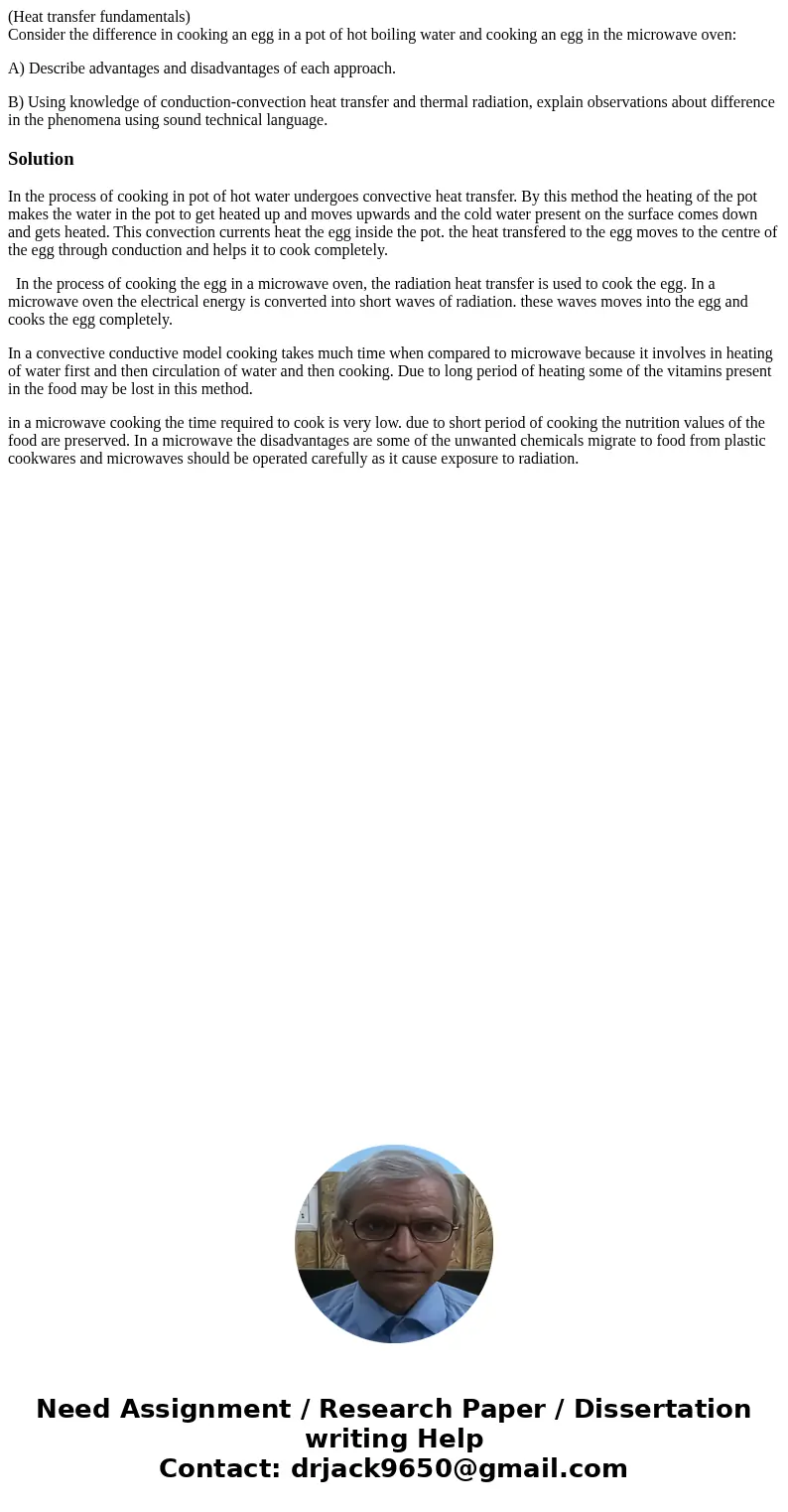Heat transfer fundamentals Consider the difference in cookin
(Heat transfer fundamentals)
Consider the difference in cooking an egg in a pot of hot boiling water and cooking an egg in the microwave oven:
A) Describe advantages and disadvantages of each approach.
B) Using knowledge of conduction-convection heat transfer and thermal radiation, explain observations about difference in the phenomena using sound technical language.
Solution
In the process of cooking in pot of hot water undergoes convective heat transfer. By this method the heating of the pot makes the water in the pot to get heated up and moves upwards and the cold water present on the surface comes down and gets heated. This convection currents heat the egg inside the pot. the heat transfered to the egg moves to the centre of the egg through conduction and helps it to cook completely.
In the process of cooking the egg in a microwave oven, the radiation heat transfer is used to cook the egg. In a microwave oven the electrical energy is converted into short waves of radiation. these waves moves into the egg and cooks the egg completely.
In a convective conductive model cooking takes much time when compared to microwave because it involves in heating of water first and then circulation of water and then cooking. Due to long period of heating some of the vitamins present in the food may be lost in this method.
in a microwave cooking the time required to cook is very low. due to short period of cooking the nutrition values of the food are preserved. In a microwave the disadvantages are some of the unwanted chemicals migrate to food from plastic cookwares and microwaves should be operated carefully as it cause exposure to radiation.

 Homework Sourse
Homework Sourse